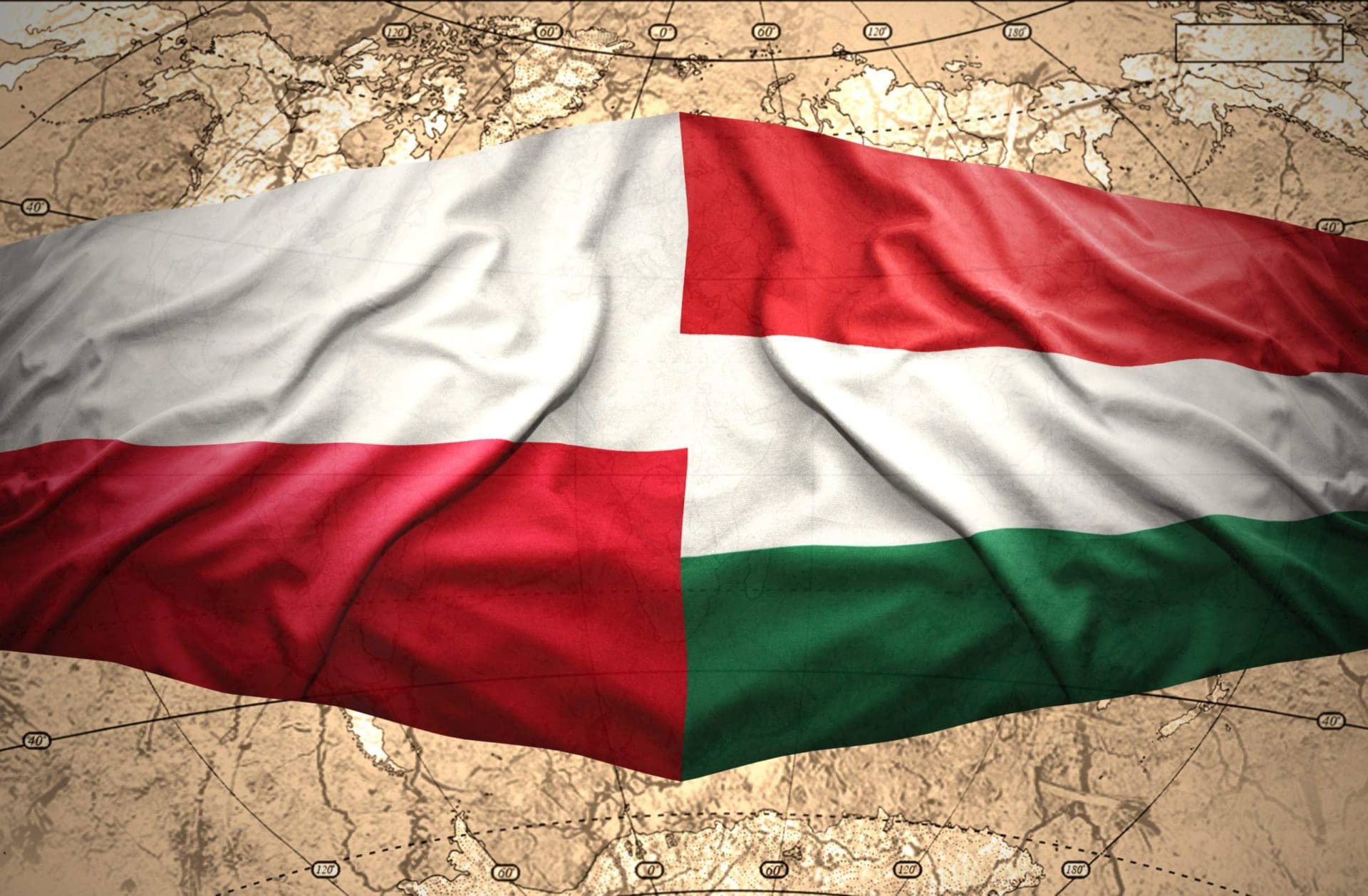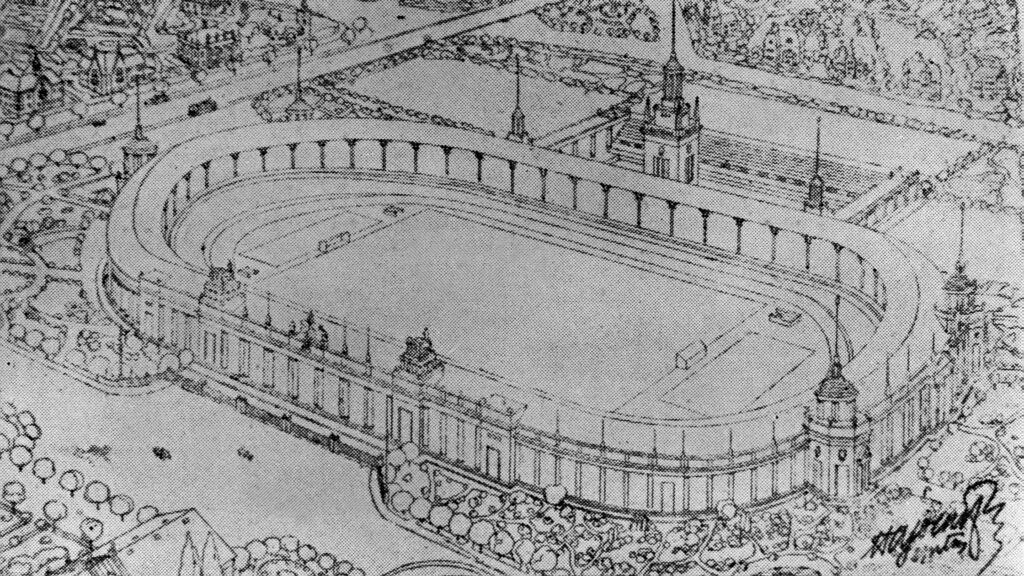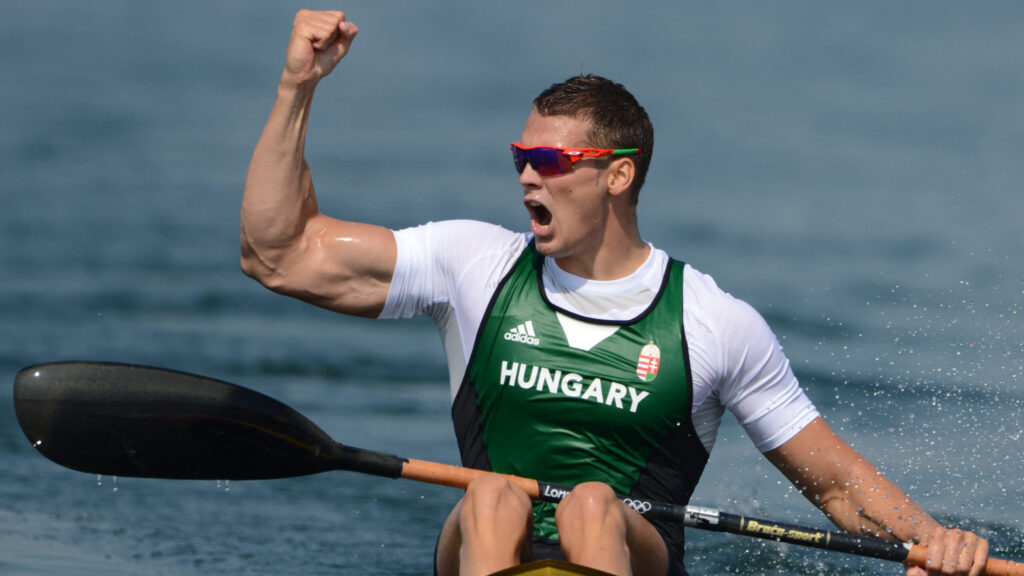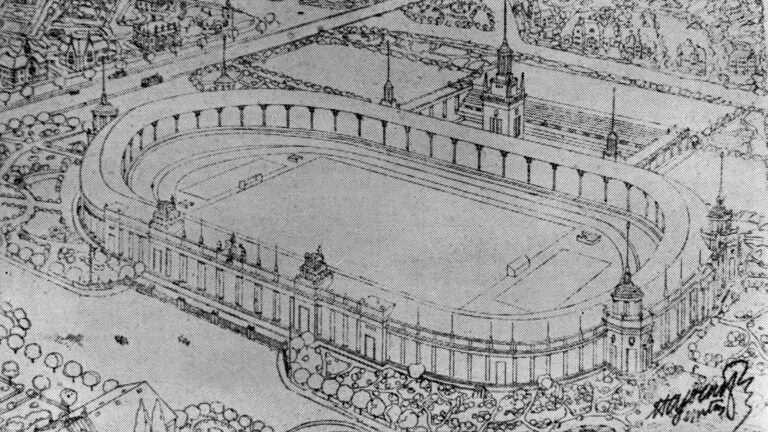Pole and Hungarian — two brothers,
good for saber and for glass.
Both courageous, both lively,
May God bless them.
In 2007 both the Hungarian and the Polish parliament declared 23 March to be the ‘Day of Polish-Hungarian Friendship’. In each year this day is celebrated in the two countries with cultural programs, art exhibitions and other family friendly events[1]. To commemorate the day this article reviews all the major historic events when Hungarian-Polish friendship revealed itself.
The two countries’ friendship can be traced back to 1335 when the first Congress of Visegrád was held. The participating sovereigns, Kings John I of Bohemia, Charles I of Hungary and Casimir III of Poland strengthened regional cooperation between their countries by forming an anti-Habsburg alliance. The summit which was initiated by the Hungarian king successfully prevented a conflict between Bohemia and Poland by settling their disputes over the Duchy of Silesia. Resolving the conflict was important to counteract Habsburg expansion in the region and to set up an economic cooperation which was supposed to counterweight the economic significance of Vienna. Although the regional cooperation did not end up being as successful as the sovereigns hoped so, it was a beginning of a great friendship between Hungary and Poland.
Four years after the first summit, the kings met again at Visegrád in 1339. As Casimir III of Poland did not have an heir, he and the Hungarian king agreed that Charles I’s son, Louis I of Hungary can inherit the Polish throne. When Casimir died in 1370 Louis did became king of Poland which then was governed in personal union with Hungary. The two countries were kept separate and after Louis’s death the Polish throne was inherited by his daughter, Jadwiga who became the queen regnant of Poland. Louis was not the only one Hungarian on Polish throne, in 1576 Stephen Báthory, the Prince of Transylvania was elected to be the King of Poland and the Grand Duke of Lithuania.
The most prominent example of how deep the Polish-Hungarian friendship is, come from the 1848-49 Revolution and Freedom Fight. During the freedom fight a significant proportion of the military officers of the Hungarian army were from Poland. The most famous of them is Jozef Bem, who is called ‘Bem Apó’ that is ‘Father Bem’ by Hungarians. His sacrifice and struggle for the Hungarian freedom fight as well as his military talent which help the Hungarian army to many victories is held very dear in Hungarian public memory.
While the Nazis demanded Hungary, their ally, to give out these refugees, Hungary firmly committed herself to provide a safe haven to all Polish refugees
A century later, the strength of the Polish-Hungarian friendship was heavily tested during World War II. Poland was fighting with the Allies, while Hungary sided with the Axis powers. When Poland collapsed due to the Nazi and Soviet invasion in 1939, Hungary took over 100 000 Polish migrants. While the Nazis demanded Hungary, their ally, to give out these refugees, Hungary firmly committed herself to provide a safe haven to all Polish refugees. Hungary also resisted the Nazi demand to reach the Polish front through Hungary (due to the revision of the Trianon treaty, the Hungarian-Polish border was restored just before the beginning of World War II). The Polish children who were accepted to Hungary during the early days of the war were educated and bought up in Hungary during the war – in 1940 a Hungarian-Polish high school was opened specifically for them. Until it was possible (i.e., until Hungary’s Nazi occupation), Hungary also secretly assisted Polish soldiers to flee to France, to the UK and to the Middle East escaping Nazi retaliation[2].
The Revolution of 1956 was not without Polish help either. As the revolutionaries in Hungary were inspired by the Polish revolution in Poznan against communism which happened just a couple of months earlier, one of the stations of the Hungarian Revolution was the Bem Square. The location chosen to honour the Polish struggle for freedom as well as the two countries’ friendship. When the Soviet military started to break down on the Hungarian revolution Poland was quick to offer aid to Hungarians. Munition, money aid as well as blood donations were sent to Hungary, saving thousands of lives. By 9 November 1956 Poland had supplied to Hungary 795 litres of blood, 415 litres of blood plasma, bandages and other medical supplies. At the time the aid supplied from Poland was worth 2 million USD, and it was a twice larger aid than the combined aid Hungary received from all other countries[3].
The Visegrád 4 (Hungary, Poland, Slovakia and Czechia) grew out of the friendship of Hungary and Poland, and as its historic legacy the group traces back its founding to the first Congress of Visegrád in 1335. Besides the V4, another contemporary example of the two country’s friendship is from last year when Hungary returned to Poland a Renaissance armour. The armour ended up in Hungary due to a series of misunderstandings during the interwar period – it was believed to be the armour of King Louis II of Hungary, but later it turned out that it belonged to King Sigismund II Augustus of Poland. The armour was returned to Poland as a gesture of Polish-Hungarian friendship just over a year ago[4].
[1] Quinn Hargitai, ‘In a world of global tension and conflict, it’s both endearing and unusual that two countries that don’t even share a border have set aside a day solely to appreciate their friendship’, (13 February 2017), bbc.com, https://www.bbc.com/travel/article/20170210-two-countries-as-close-as-brothers, accessed 22 March 2022.
[2] Lengyel menekültek Magyarországon, https://penzmuzeum.hu/hirek/lengyel-menekultek-magyarorszagon
[3] Miklós Mitrovits, ‘Magyar–lengyel kölcsönhatások az 1956-os forradalom idején’, (23 October 2016), ujkor.hu, https://ujkor.hu/content/magyar-lengyel-kolcsonhatasok-az-1956-os-forradalom-idejen, accessed 22 March 2022.
[4] ‘Orbán megköszönte a lengyeleknek, hogy Magyarország eddig őrizhette II. Zsigmond Ágost gyermekpáncélját’, hvg.hu, https://hvg.hu/kultura/20210217_orban_viktor_lengyelorszag_gyermekpancel_ii_zsigmond_agost_kiraly, accessed 22 March 2022.







